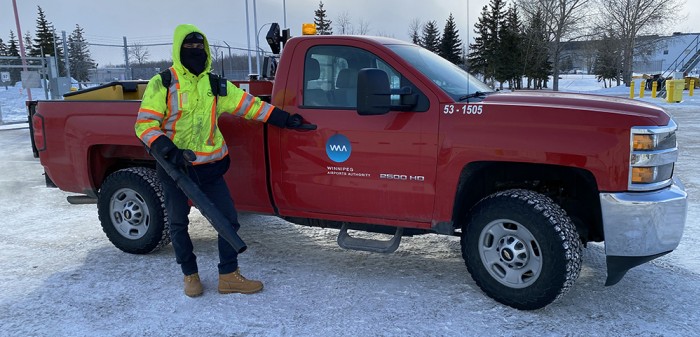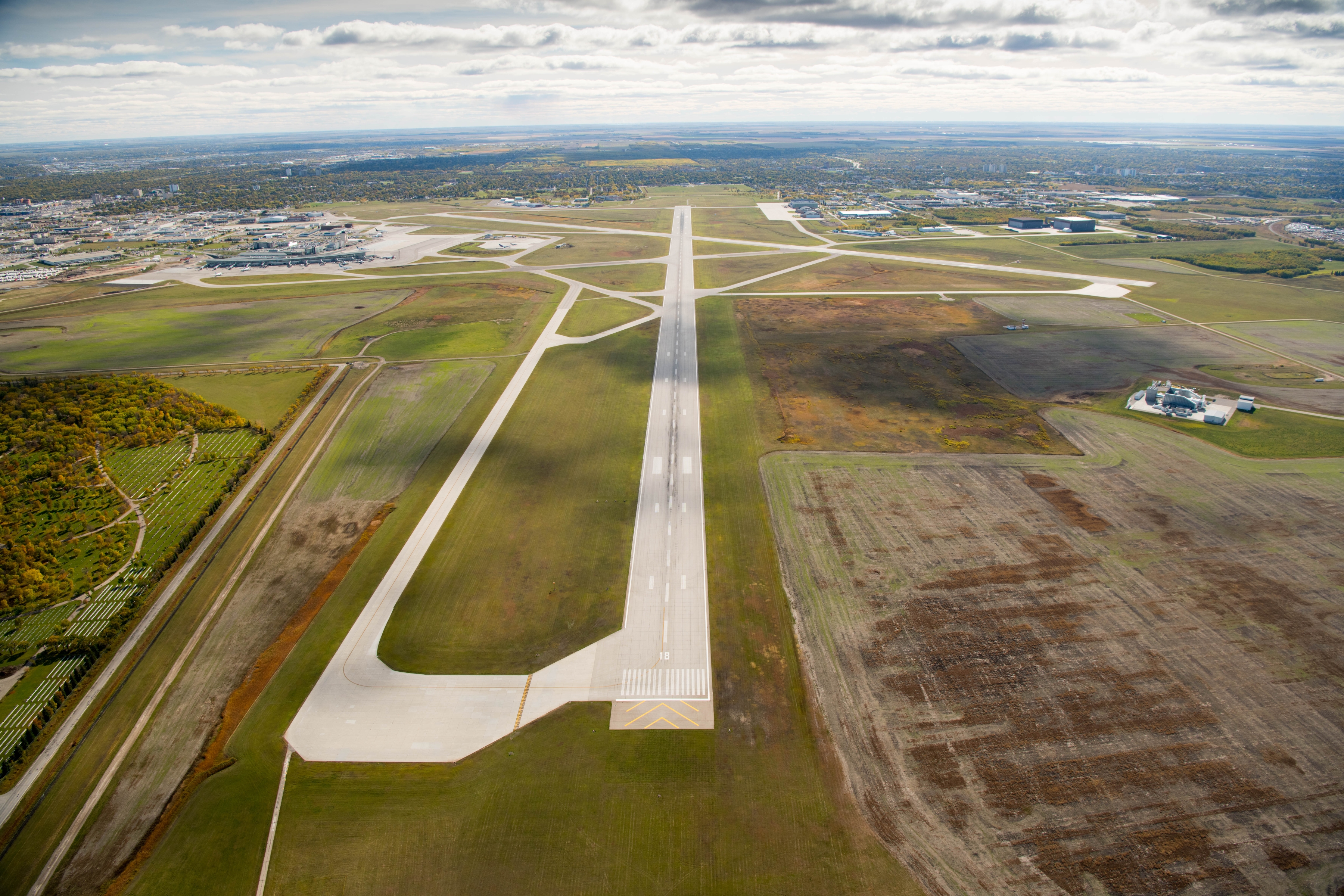Like tire marks on a road, the runways at YWG are splattered with rubber streaks from aircraft tires, particularly during the summer months. Overtime, the build-up of these rubber marks can create a smooth surface - too smooth in fact.
According to the International Airport Review, "every time an airplane lands, it deposits about a pound to a pound and a half of rubber on a runway." At YWG, the rubber removal process is initiated when there is a need to refresh the surface to ensure aircraft can always land safely and easily grip the runway.
"We need to have a certain braking coefficient that is adequate for the braking of an aircraft," explained Airfield Duty Manager Tom Kushner. "When the rubber gets wet, there is less resistance for braking."
Kushner, who has been working on the airfield at YWG for 20 years, shares how important it is to monitor the status of the runways from spring until fall and remove the rubber when it reaches a certain point.
"We typically remove the rubber twice a year to help provide the most optimal braking that we can," said Kushner. "It usually takes us two days to do both runways with four crew members working on it."

The metal bristles connected to the broom of the sweeper-a valuable piece of airfield equipment - work in combination with moisture on the runway to clean the surface and remove the rubber. This season, only Runway 18/36 underwent rubber removal due to reduced aircraft movement amid COVID-19 and also high winds this summer resulting in fewer landings on Runway 13/31. Runway 18/36 is now in much better condition as it awaits a fresh coat of paint on the centre line for the finishing touch.
Typically accomplished in the fall, the rubber removal process took place early this year in preparation for the airport's friction assessment. Tradewind Scientific, a company known for friction monitoring services across Canada and the U.S., visits the airfield annually to conduct friction tests on both runways at Winnipeg Richardson International Airport.
"Those numbers are submitted to Transport Canada and are for our benefit as well in case we need to take action to improve the runway surface condition," said Kushner.
The rubber removal took place earlier this week followed by the friction tests. The scheduled service is at the discretion of the company as they are in high-demand across the country to help ensure safe operations. With one fall duty already checked off the to-do list, rubber removal won't be evaluated again until the spring of 2021 as it is naturally built into winter operations on the airfield.
All winter long, the airfield maintenance crews are travelling up and down the runways operating heavy machinery in a conga line to remove any residue off the runways. This includes ice, sleet, de-icing fluid and rubber. The runways are reassessed for rubber residue once the snow starts to melt to ensure YWG can always support safe aircraft movement 24-7 in all weather conditions.



